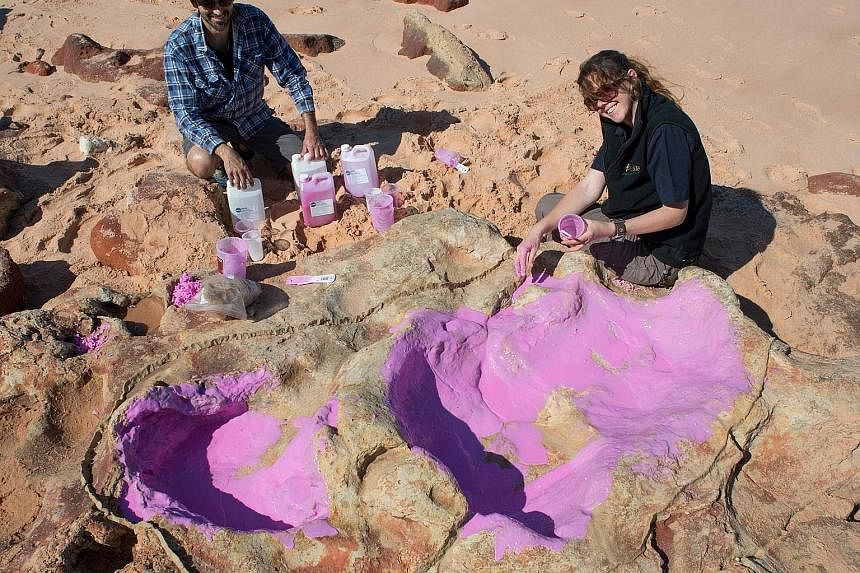Dr Anthony Romilio and Ms Linda Pollard from the University of Queensland creating a silicon cast of sauropod tracks in the lower cretaceous broome sandstone in the Walmadany area of Dampier Peninsula, Western Australia. An "unprecedented" 21 different types of dinosaur tracks have been found on a stretch of Australia's remote coastline, scientists said yesterday, dubbing it the nation's Jurassic Park. Palaeontologists from the University of Queensland and James Cook University said it was the world's most diverse discovery of such a kind, unearthed in rocks up to 140 million years old. Dr Steve Salisbury, lead author of a paper on the findings published in the Memoir Of The Society Of Vertebrate Paleontology, said the tracks were "globally unparalleled". It was almost lost, with the Western Australian government in 2008 selecting the area as the preferred site for a massive liquid natural gas processing precinct. Alarmed, the region's traditional Aboriginal custodians, the Goolarabooloo people, contacted Dr Salisbury and his team to officially research what they knew was there. The area was eventually awarded National Heritage status in 2011 and the gas project subsequently collapsed.
Tracking down the Aussie 'Jurassic Park'
SPH Brightcove Video

Join ST's Telegram channel and get the latest breaking news delivered to you.
A version of this article appeared in the print edition of The Straits Times on March 28, 2017, with the headline Tracking down the Aussie 'Jurassic Park'. Subscribe
